Forensic genealogists combine traditional research on family trees with DNA bases. They identify the remains of people involved in unsolved cases for many years.

In August 1979, while searching for arrowheads in civil defense caves in Idaho, a family was unlucky enough to stumble upon the remains of a human body in a bag hidden under a layer of sedimentary rock 20 cm thick.These caves are lava tubes running from Yellowstone National Park , which during the Cold War were partially converted into bomb shelters.
The identity of the deceased, the rest of whose body was not found, and how he ended up in the cave east of Dubois, were the subject of controversy from the very beginning. Clark County Sheriff Earl Holden believed that the deceased's clothes - striped shirt, white T-shirt, knitted brown sweater, black woolen trousers with suspenders - were about 60 years old. In his report, he indicated that a gambler could have worn such clothes in that era. Coroner Ernie Seal, Holden's best friend, disagreed with him, and believed that the man had died no earlier than 10 years before the discovery. Doug Ubelaker, an anthropologist at the Smithsonian Institution who helped the FBI with the investigation, estimated that the remains had lain in the ground for 6 months to 5 years.
Clark County is large, sparsely populated, and rural. The main city of the district is Dubois, with a population of 600 people (then 400 lived in it). The body made an uproar in the local community, and became a black spot in the serene cityscape - but without any context. In the absence of details and DNA tests, the body has become the subject of local legends. This story was constantly told and retold, but the whole case remained unsolved.

Human remains discovered in Idaho cave in 1991 after the discovery of a hand without a body
Then in March 1991, while searching for treasure in a cave with her family, 11-year-old Anna Rogers strayed away from the group, walked into the darkness along the edge of the cave, and her torch illuminated a pale human hand lying on the ground. The connected authorities quickly found all other parts of the body wrapped in sackcloth - everything except the head. The Idaho Bureau of Investigation and the FBI were brought in to investigate, the bones were sent to the FBI lab, and the Idaho Museum of Natural History and Idaho State University planned excavations. “I would like to find this skull,” said then-Sheriff Craig King. "The cause of death would immediately become clear from him." But systematic excavations have come to nothing.
Ubelaker uses this story in his lectures as an example of a complex case. In his book Bones: A Casebook of a Forensic Detective, he discusses the psychological effect such a find might have on young Anna Rogers, and hopes she took it all through a child's lens of adventure. Rogers told me by email almost 30 years after the discovery: “It changed my attitude towards Dubois, he no longer seemed so safe to me. It was a small town compared to Seattle. I felt sorry for him, and thought that his family might miss him. I was also worried that a murderer might walk somewhere free. "
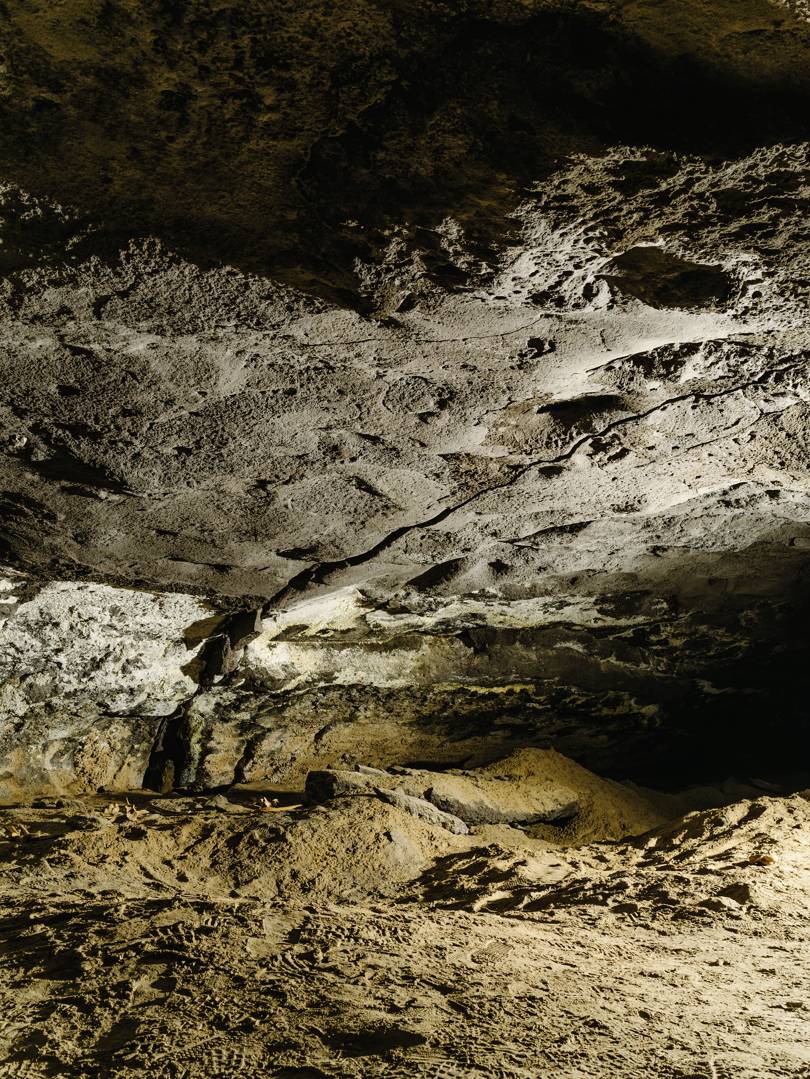
A cave in Idaho where human remains were found in 1979 and 1991
Anthony Redgrave did not know his father - he left the family when the boy was only three months old. Growing up in Baltimore, Maryland, Anthony is left with several artifacts and stories as memories from his father. “Two photographs: one in which he is holding me, one in which he is sitting on our couch. A plush dragon, a gift from him that my mother gave me. And a cassette of Blue Öyster Cult's Some Enchanted Evening, ”he tells me over Skype, sitting next to his wife, Lee Bingham Redgrave, at their Massachusetts home. "I didn't know anything about him, but one of the photographs showed his birthday."
Anthony has always had a passion for computers. As a boy, he was fond of science, had a creative streak, and he also liked anime and Bowie songs. He went to school of fine arts, and at the same time studied the basics of genealogy (the study of family history), because he wanted to find evidence of his father's presence online.
He met Lee in 2006 on the OkCupid website, and their common interest was finding a family. Raised in a foster home, Lee found her biological mother at age 18, and was later able to track down her father by confirming his identity using a homemade DNA test from AncestryDNA. This was the first project the couple worked on together.
They made a good research team that tracked down contacts with relatives of Anthony's father at the end of 2010. “The day after Thanksgiving, I called a woman who I had a suspicion that she might be my aunt,” says Anthony. And now the phone is passed from one family member to another. "Now I have more than 100 cousins and a dozen aunts and uncles - and that's just one side."

Amy Michael, Anthony Redgrave and Lee Bingham Redgrave
Lee previously worked as a doula, and draws parallels between this occupation and genealogy. “The science of motherhood is a combination of science and art, an imprecise science,” says Lee. - As well as genealogy. DNA is, of course, a science, but much of genealogical research is an art to be learned. It's a strange hybrid. " The Redgraves spent years honing their art as a side income, undergoing formal and informal training, helping foster children in search of their parents for free - they were something like "search angels". They later began offering services such as complete family tree reporting for paying customers.
Then in January 2018, there was a shift. Their friend Christa Steel-Knudslin died at the hands of her husband.
This murder shocked them. They met Steel-Knudslin after the suicide of one of their friends, Lars, in 2008. According to them, his death was the catalyst for their immersion in genealogy, while the death of Steel-Knudslin forced them to find a deeper meaning in the genealogy. “Her husband killed her, and we couldn't do anything about it. What to do with all the accumulated energy? You put it all into work, ”says Lee.
Realizing that they had gone headlong into search work to hide from reality, their friend sent a couple to one of the posts on Reddit, made by the then new non-profit organization DNA Doe Project [in the United States, unidentified remains are named John Doe(John Doe) for men and Jane Doe (Jane Doe) for women / approx. per.]. It was founded by Margaret Press and Colin Fitzpatrick. This volunteer organization has made it its goal to identify the unidentified remains of people, many of whom have become victims of crime.
At first, the Redgraves objected to cooperating with the organization, going about their business. However, their friend insisted that they make contact with the organization, since their skills were perfect for its tasks, and, besides, their grief needed some way out. “We ended up talking to Colin on the phone for an hour and a half,” Lee says. They soon took over the leadership of the team on one of the first DNA Doe Project cases.
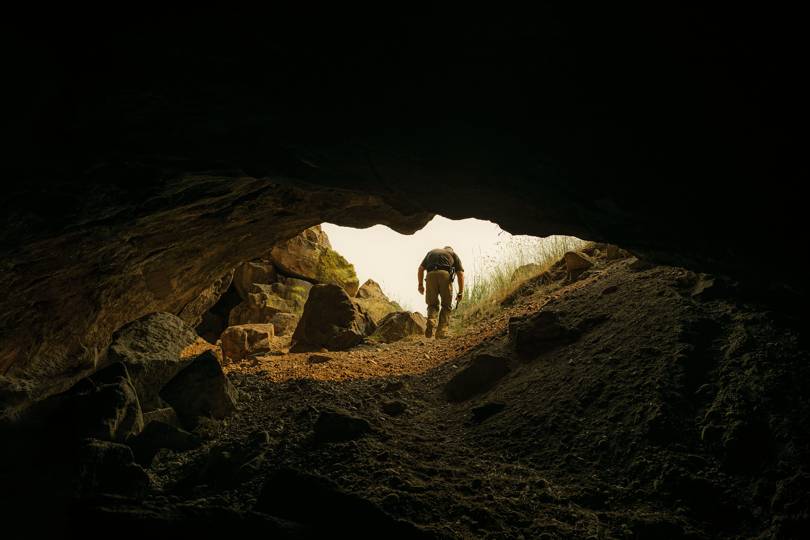
Sheriff's Deputy John Clements emerges from a cave where burlap-wrapped body parts have been laid for decades.
Genealogists love to solve riddles. In search of clues, they determine where the freely dangling "tails" of the tapestry with the family's family tree lead. Under the leadership of Press and Fitzpatrick, the Redgraves entered the world of forensic genealogy. This is a new line of investigation, combining genealogical research with genetic data in order to identify victims (and sometimes suspects) of crimes. DNA data is usually obtained from DNA testing companies for the end user. The DNA Doe Project focuses on the identification of the dead: in the United States, according to some sources, the remains of at least 40,000 different Doe were found.
Fitzpatrick had ties to law enforcement around the country thanks to her company IdentiFinders, which helps identify individuals using public databases and Y-DNA.- a genetic marker passed from father to son. The new technology used by the DNA Doe Project has attracted the interest of various agencies, but not Ancestry or 23andMe, two of the largest players in the consumer DNA testing market. These companies require a live client to send them his saliva to receive a DNA report, and user data is only released to law enforcement agencies upon official request. 23andMe's operating principles record that the company “has decided to use all practical legal and administrative resources to resist the demands of law enforcement.
To get around this problem, a complete genome decoding was required. Once such a procedure cost millions of dollars, but today it can be kept within $ 1,500, and its accuracy is much higher than that of Y-DNA tracking. The lab could take a DNA sample from Doe and create a digital report of his entire genome. Importantly, the bioinformatist can then shrink the file from three million characters to about 600,000 characters to achieve compatibility with a service like GEDmatch.
GEDmatch is an open source database of human genomes that allows anyone to download DNA transcripts obtained from any of the companies working with individuals and find contacts of potential relatives who have done the same. With the recent rise in popularity of DNA transcripts at home, more people are uploading their DNA to GEDmatch, which expands the dataset. Although, for now, it is still too small, so forensic genealogists have a chance to find only second and fourth cousins.
"This was the last chance," says Press. “We didn't know what the DNA of a dead, decomposed body would look like, and whether there would be a chance to find at least some matches. Will it be possible to extract enough DNA from the samples. But gradually everything worked. "We talk to Press on Skype, and behind her I see cases marked with sticky note paper and grouped: on the left - uncovered (30), on the right - undisclosed (35).
Law enforcement agencies and forensic experts send old unresolved cases in the DNA Doe Project directly. Sample processing costs are sometimes covered by donations. The process is as follows: the DNA of an unidentified person is extracted in the laboratory, which is then sequenced(sometimes in another laboratory). Depending on the quantity, sample contamination, degradation or improper storage, this may take several attempts. The bioinformatist then removes the distinction between the lab results and the information uploaded to GEDmatch. It runs the sequencing results (and there can be hundreds of gigabytes of data) through an algorithm that produces 13MB of data that can already be loaded into GEDmatch. After loading the data, the volunteers search the database for matches and begin to fill in the data of a large family tree, sometimes listing thousands of distant relatives using already existing trees and other documents.
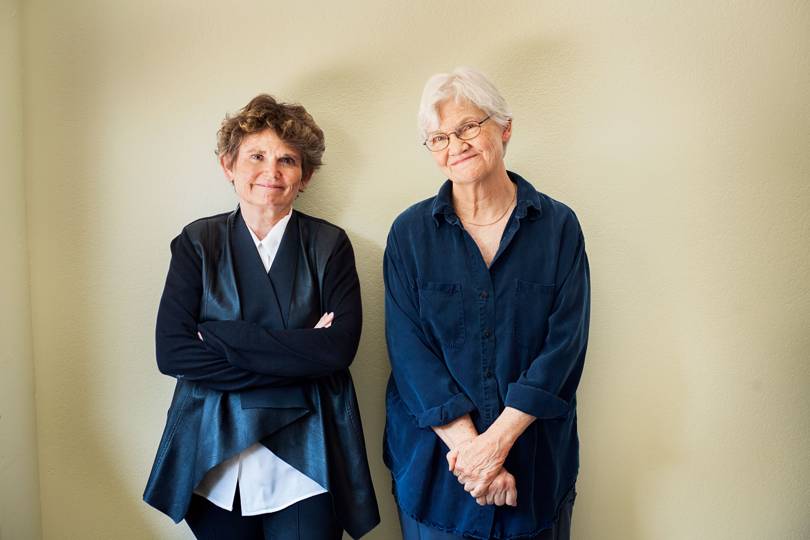
Colin Fitzpatrick and Margaret Press
From the very beginning, about 12 volunteers worked in the DNA Doe Project, but since then their number has grown to 60-70, people not only from the United States, but also from all over the world, and several hundred more are waiting for their turn to be accepted. Volunteers from the genealogy community who have experience finding people with no parental information are accepted. “You have to understand what you are doing and know how difficult these kinds of things can be,” Fitzpatrick says.
The breakthrough business of the project is known as the "girl with deerskin". In 1981, the body of a murdered woman was found in Miami County, Ohio. The team uploaded her DNA to GEDmatch in March 2018 and identified her in just four hours. At a press conference it was announced that her name was Marcia King, that she was born in Little Rock, Arkansas, and at the time of her death she was 21 years old.
This happened just two weeks before genetic genealogist Barbara Rae-Venter and her team, using similar methods, identified the " Golden State killer"Thanks to this case, forensic genealogy hit the headlines." For the first time in the world, people learned that genetic genealogy is used in this way, - says Press. - And then we began to receive mountains of calls. Then we realized that in our century enough work. "
However, faced with the first public successes, forensic genealogy has undergone more scrutiny, which has raised sensitive questions. For example, how law enforcement agencies will be able to access and use genetic information. On May 18, 2019, GEDmatch changed its privacy policy, according to which users must explicitly consent to the use of their information by law enforcement agencies. This came after an incident in which detectives were allowed to use the site to search for a violent attacker. At the same time, the site allowed to use the data only for investigating cases of sexual violence and murder. After that, in a short period of time, matches on a dozen cases of the DNA Doe Project disappeared from the database. For example,a cousin of the "girl with deerskin" decided not to share his information with law enforcement agencies. And if his profile had been closed initially, the girl would not have been identified.
The DNA Doe Project uses a similar database, FamilyTreeDNA, and has featured in its own scandal. After its opening, it allowed the FBI to use user data without informing the clients themselves (now there you can refuse to disclose your profile).
As with any new field, standard practices develop gradually. There is controversy over when to give law enforcement access to DNA data so that they can identify victims or suspects. In November 2019, Florida police received an order to investigate the entire GEDmatch database, including the data of those people who did not agree to it. Scientists have called this a dangerous precedent.
“This is a completely new area,” Fitzpatrick says. She has already left the DNA Doe Project to concentrate fully on IdentiFinders. - There are bad people in it. We are trying to act as carefully as possible. "
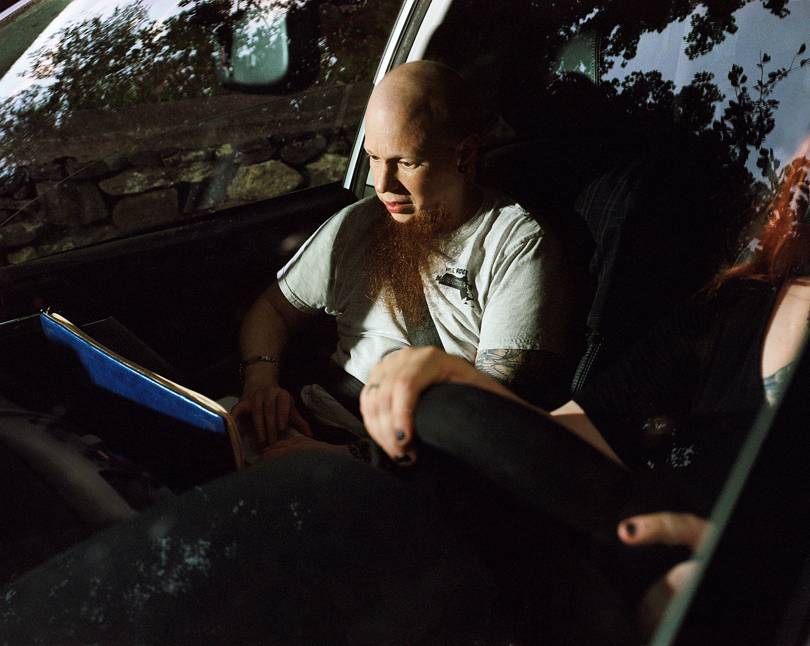
Forensic Genealogist Anthony Redgrave
By 2017, 38 years after the discovery of a human torso in the caves of Clark County, a search for the skull had turned up nothing. John Doe's DNA was recovered and entered into the FBI, CODIS and NDIS databases, as well as the national database of missing and unidentified persons NamUS.
The Redgraves first learned about this case in 2019. Amy Michael, a former visiting associate professor at Idaho State University, met the couple and invited them to give a lecture to her students at the University of New Hampshire. There she told the couple about a mystery that even the FBI could not cope with.
Together with Samantha Bluth, who joined the University of Idaho as an adjunct professor in 2018, Michael compiled a biological body profile. It stated that the body was dismembered, most likely after death, “using various methods and tools,” and that no clear cause of death is visible. The man was most likely Caucasian, had brown or reddish hair, and was probably between the ages of 25 and 45. The biological profile was sent to Deputy Sheriff John Clements, who was in charge of the case, and with his permission, DNA was sent to the DNA Doe Project in May 2019.
After extracting, sequencing, and uploading the DNA to GEDmatch, a team of volunteers got to work in July, and under the Redgraves' direction, they began filling out various spreadsheets and family trees. It was clear that four hours, as in the case of the "deerskin girl", would not be enough. In the process of searching, the common surname Loveless or Lovelace of Utah Mormon pioneers who practiced polygamy surfaced. This turned the family tree into "spaghetti," Lee said, adding to the complexity of the search. From one grandfather or grandmother, several hundred cousins could have appeared. Endogamy and short-term communication were practiced, which in an unpredictable way influenced the distribution of DNA along the family tree. Too wide age limits did not help either,and also the time interval for the period from the moment of death to the discovery of the body.
However, Greg Magoon, a bioinformatics scientist, discovered the name Lovelace in Y-DNA markers in October, and then another volunteer traced Doe's DNA to one of his paternal ancestors, the situation began to clear up. “Everything turned upside down because at first I was looking for maternal relatives,” says Anthony. “That's when the loop began to tighten, and we went from 30 possible candidates to three.”
They studied three candidates, looked for information about whether they were alive, made timelines. Two people apparently lived and died elsewhere while working on the railways. Records from FindAGrave.com revealed that a third, Joseph Henry Lovelace, is resting in his grave in Payson, Utah.
Only this could not be. Volunteers noticed that Henry's wife Agnes Lovelace's FindAGrave profile was complete. The exact date and cause of death was indicated: 1916, killed with an ax. On one of the genealogical sites, a murder story was found that coincided with this. But Henry's profile on FindAGrave did not have such records, only the date of death was indicated - 1915, which, upon closer inspection, did not appear on the tombstone. It only read "1870 -".
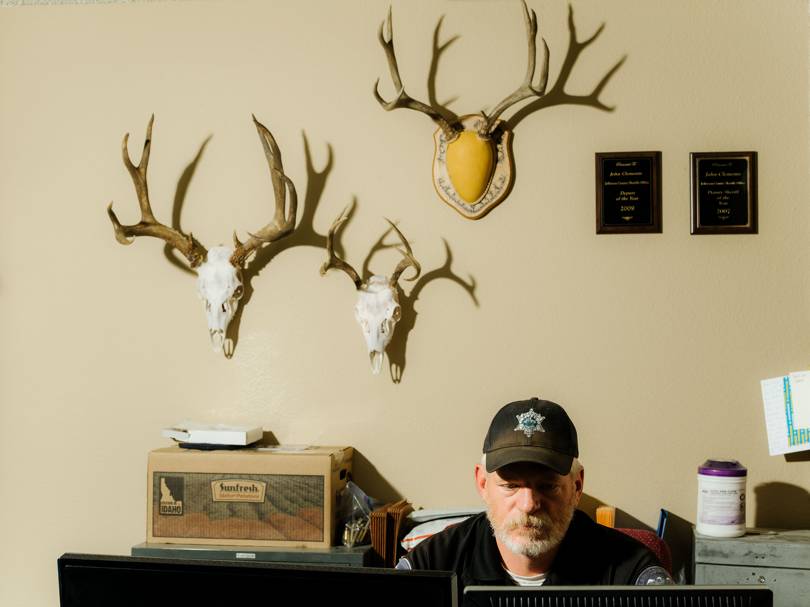
Deputy Sheriff John Clements
Payson City Cemetery workers confirmed by phone that there was no date of death. It turned out that one of the family members confused Henry with his brother Jedediah, who had the same first initial in his name and was trampled by horses in 1915. By mistake, his date of death was indicated on Henry's profile on the FindAGrave website.
Volunteers scanned newspaper clippings of the day to find confirmation of the life story of Joseph Henry Lovelace. For today's sensitive times, his story seems truly wild: he was born in Payson, Utahin 1870, was a bootlegger, thief and criminal. His wife Agnes was also a bootlegger, and was killed by a certain "Charles Smith" on May 6, 1916. On May 7, an Idaho newspaper reported the arrest of "Walter Currance", also posing as "Smith," for the murder of Agnes, his "common-law wife." A few days later, another note indicated that "Walter Cairns" had escaped from his prison cell with a hacksaw hidden in his boot and was never subsequently caught.
In total, it took 14 volunteers more than 15 weeks to solve the case, and to compile a common family tree from the trees of 250 relatives, which included 31,730 people. When they reached out to Joseph Henry Lovelace, a criminal with a minimum of official records, and were convinced that after 1916 there was no evidence of his life, it became clear that he was most likely the man arrested for the murder of Agnes, and then escaped - regardless of the number of fictitious names he used.
The Redgraves were finally convinced that the body from the cave belonged to Lovelace when they examined the poster "Walt Cairns Wanted for Murder of Agnes and Escape from Prison." Cairns' description of his appearance matched that of his closest relatives - in particular, very sparse eyebrows. Also, the clothes described on the poster were similar to those found on the corpse - a red sweater, black pants.
Who and how killed him remains unclear. They could have been members of Agnes's family, or people who knew her. Its remains are well preserved thanks to the unique stable environment of the caves. And today, supplies from the 1960s, stored in neat boxes in a bomb shelter, look like new. In the cave where Lovelace was found, there are calcium deposits on the ceiling and the floor is made of fine silt.
On November 5, 2019, the DNA Doe Project sent a preliminary report to the Clark County Sheriff's Office, along with contact information for Lovelace's descendants. His 87-year-old grandson volunteered to help, and Deputy Clements embarked on the 16-hour drive from Dubois to California, bringing a DNA kit with him. Lovelace's grandson was eerily similar to Anthony's composite image, based on photographs of his relatives and description. The test results confirmed the relationship between grandfather and grandson.
Anthony Redgrave and Margaret Press went to Dubois on New Year's Eve for an official presentation from the sheriff, bringing Blatt and Michael with them. Blatt described how in a small shop opposite the building where the press conference was held, people groaned and gasped when they learned that the body had finally been identified.

Jane Doe tattoo on Lee Bingham's left arm (and on the right there is a "John Doe" tattoo).
The day after I first spoke to them in January 2020, the verdict was passed on Christa's ex-husband Steel-Knudslin. He was sentenced to life imprisonment with the possibility of release on parole in 25 years. Steele-Knudslin's father, Robber Steele, a humble midwestern man, asked his lawyer to read a touching final statement.